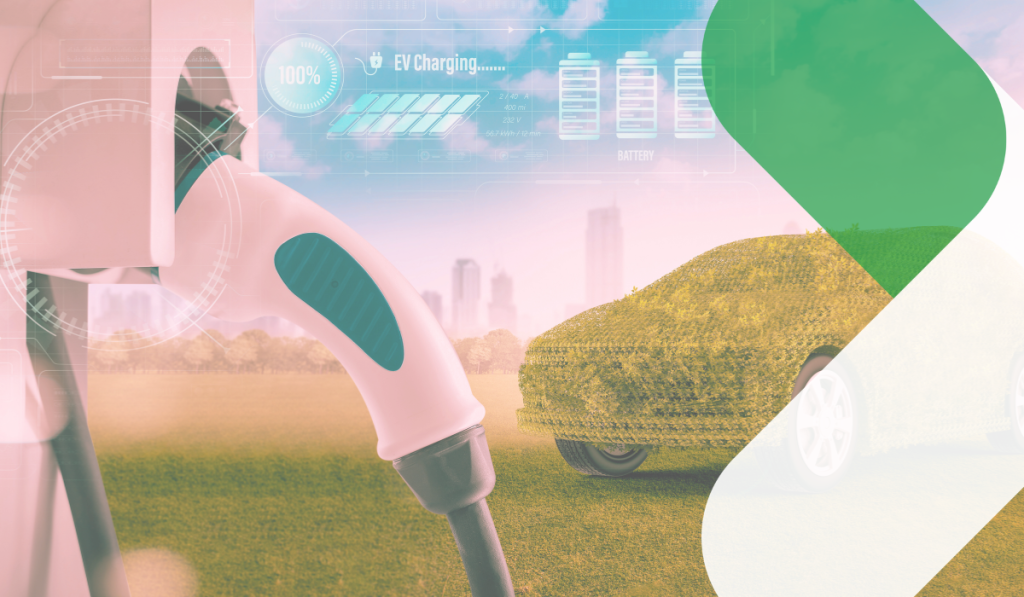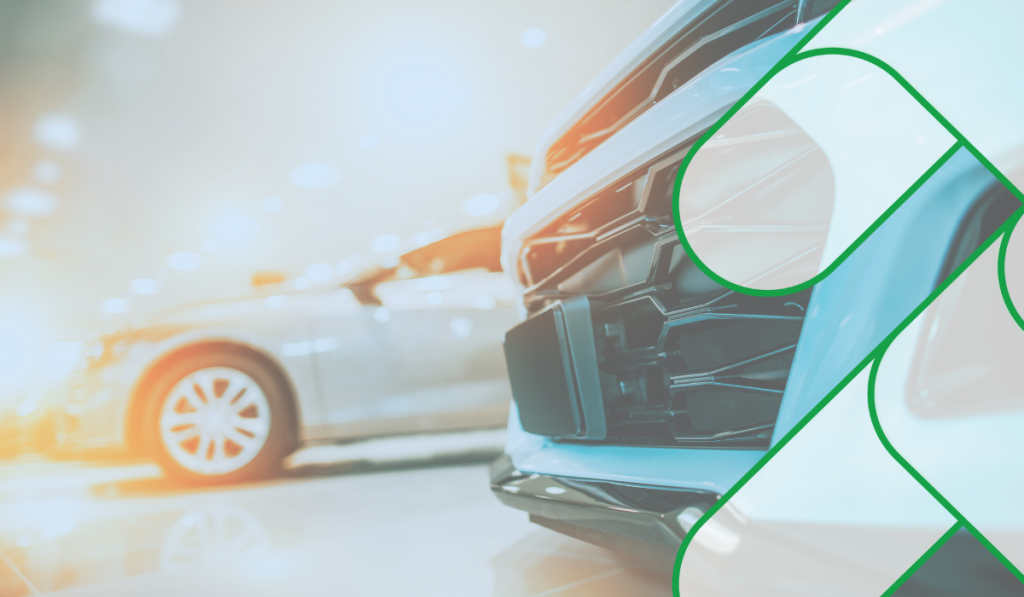
AI-Powered LiDAR: A New Era of Perception
How AI and ML enhance LiDAR technology by overcoming data processing challenges, enabling advanced applications in autonomous systems, robotics, and 3D mapping, and more.
In the next seven years, the automotive software market’s value will surpass $80 billion. This growth (at a CAGR of almost 10%) is powered by numerous factors, including the adoption of autonomous vehicles and a global need for automotive software. The whole world will actively participate in this market, but research suggests that the Asia-Pacific region will dominate.
This article explores the top 12 automotive technology trends and expectations for 2024. It specifically focuses on the rise of electric vehicles (EVs), autonomous and semi-autonomous vehicles, connected vehicles and IoT technologies, the increase in various augmented technologies, 5G connectivity, and automobile-related cybersecurity.
The following are the most prominent automotive technology trends likely shaping the upcoming year and the era to follow.
There has been a gradual rise in the adoption and de-stigmatization of EVs in the last few years. 2024 is likely to be a significant milestone in this story. This trend is driven by sustainability initiatives, giant leaps in automobile battery technologies, and the rise in EV charging ports across homes, offices, and public spaces. According to the International Energy Agency’s Global EV Outlook 2023, more than 2.3 million EVs were sold in just the first three months of 2023. This is a dramatic increase from previous years and shows clear signs that the first few months of 2024 will see higher adoption volumes.
Beyond 2024, we can anticipate further advancements in battery technology, leading to extended driving ranges and faster charging times. This will likely accelerate the adoption of EVs across various market segments, including commercial transportation, where the demand for efficient, eco-friendly options is rapidly growing. The EV market is expected to rise at a rate never seen before because of government incentives and increasing environmental awareness.
We have been hearing about the promise of self-driving vehicles for decades now. 2024 will be the year that this technology, once considered science fiction, will proliferate and become mainstream. According to McKinsey, the adoption of self-driving vehicles can generate between $3-4 billion in the next 12 years. Furthermore, self-driving cars will likely showcase measurable benefits such as greener operations, enhanced road safety, and higher profit margins via increased productivity and efficiency. Some of the most exciting technologies that will power autonomous vehicles include advanced sensors and AI integrations.
In the coming years, the integration of more sophisticated AI algorithms and machine learning models is expected to enhance the decision-making capabilities of autonomous vehicles. This will not only improve safety features but also enable these vehicles to handle complex driving scenarios, bringing us closer to fully autonomous transportation solutions. Partnerships between tech companies and automotive manufacturers will likely play a crucial role in this evolution.
The modern car is more than just a vehicle. It’s an all-in-one connected system that can provide numerous advantages to regular consumers and enterprises. Automotive IoT in 2024 will result in benefits like sustainability, traffic management, and enhanced end-user experience for drivers. The evolution of automotive IoT is fueled by 5G connectivity and rapid advancements in edge computing. Edge computing is where data collection and processing occur in close proximity, meaning vehicles can gather and process data in real time. In 2024 and beyond, cars will be more like mobile computers.
One notable development within Automotive IoT is the Internet of Vehicles (IoV) concept. The term “Internet of Vehicles” describes a network allowing cars to talk to road infrastructure and other vehicles, resulting in a more intelligent and connected transportation system. This technology aims to decrease the environmental impact, increase road safety, and improve traffic management by streamlining routes and cutting idle times. We anticipate a more seamless integration of these systems into the urban transportation infrastructure as IoV technologies advance.
A variety of new immersive technologies will flourish in 2024, especially in automotive contexts. These technologies include AR tools, which means that drivers can get critical information, visual data, and navigational directions directly on their windshields and other panes on their dashboards. Head-up guidance systems (HGS) will help drivers by providing essential information without any distractions. In the past, drivers may have had to avert their eyes from the road to access such information, resulting in accidents. AR and other immersive technologies can help drivers stay efficient while staying safe. These AR automotive technologies will have diverse use cases, including military vehicles and industrial machinery.
Future developments in AR and immersive technologies are expected to extend beyond the driver’s experience, integrating with passenger entertainment systems and providing interactive, customizable in-car experiences. This could include virtual tours, educational content, or entertainment options, transforming the vehicle into a mobile entertainment hub.
Every periodic increase in network speeds has resulted in great shifts in the most prominent industries worldwide. 5G connectivity will bring significant gains to the automotive industry, and the following year is likely to be a significant steppingstone. The automotive and smart transportation segment in the global 5G market currently hovers over $2 billion. However, a compound annual growth rate of more than 35% in the next ten years will see this segment reaching a value of almost $42 billion. Increased 5G connectivity and adoption results will include improved safety, optimized route planning, and more organized traffic.
The expansion of 5G will enable more than just enhanced vehicle communication. It will also support the development of smart cities where vehicles interact with urban infrastructure. This could include smart traffic lights that communicate with cars to optimize traffic flow, or parking systems that guide drivers to available spots, thereby reducing congestion and emissions.
We mentioned earlier that vehicles today are more like computers than carriages. The benefits of this transformation are significant. However, this also means that automobiles are susceptible to a range of new threats, including cyber-attacks. A major cyber-attack on an enterprise’s smart fleet can cause millions of dollars in damages. Examples of automotive cyber-attacks include phishing campaigns, ransomware injections, infotainment system hijacks, supply chain ambushes, and damage to the backend infrastructure. All the promises of automotive technology can come apart if cybersecurity is not treated as an absolute priority in 2024.
As threats to automotive cybersecurity grow more complex, a collaborative approach to cybersecurity is becoming essential. This involves partnerships between automotive companies, cybersecurity experts, government agencies, and other stakeholders. Such collaboration aims to develop shared standards and best practices, conduct joint research and development, and share knowledge and resources to predict, prevent, and respond to cyber threats in the automotive sector more effectively.
In the age of big data, the automotive industry recognizes that prioritizing data protection is becoming more and more critical. As automobiles grow increasingly interconnected and dependent on data, software developers and automakers focus on implementing robust data protection procedures. This also involves secure data storage, encryption, and anonymization methods to safeguard user privacy. Furthermore, the sector is being forced by legal compliance with standards such as GDPR to embrace more transparent data handling processes, guaranteeing the protection and responsible use of customers’ personal information.
The rise of autonomous and connected vehicles elevates the importance of data privacy. With cars collecting and transmitting vast amounts of data, including location, driving patterns, and even biometric data, ensuring this information remains secure is paramount. Manufacturers are exploring new technologies like blockchain to enhance security and provide greater control to users over their data. The trend signifies a shift towards a more privacy-conscious automotive ecosystem, where consumer trust is as important as technological innovation.
The digital immune system concept is emerging as a critical trend, representing a holistic approach to software quality and security in the automotive sector. It encompasses automated testing, real-time monitoring, and rapid response mechanisms to identify and address software vulnerabilities and performance issues. This approach not only enhances the security of automotive software but also improves reliability and user experience by minimizing downtime and software-related failures.
As vehicles become increasingly software-driven, the digital immune system trend is expected to grow in importance. It involves integrating AI and machine learning into the software development lifecycle, enabling predictive maintenance and adaptive responses to emerging threats. This proactive approach in software management ensures that vehicles are not just secure but also continuously evolving and improving, reflecting the dynamic nature of software and cybersecurity landscapes.
AI-empowered applications in the automotive industry are revolutionizing the way vehicles are designed, manufactured, and operated. These applications range from AI-driven predictive maintenance, which forecasts potential vehicle issues before they occur, to enhanced user interfaces that provide more intuitive and personalized driving experiences. This trend signifies the shift from traditional automotive designs to smarter, AI-integrated systems that elevate both performance and user engagement.
Beyond enhancing vehicle functionality, AI-empowered applications are also transforming customer service and engagement in the automotive sector. AI-driven chatbots and virtual assistants are providing customers with real-time assistance and information, improving the overall customer experience. Additionally, AI algorithms are being used to analyze consumer data and preferences, leading to more targeted and effective marketing strategies, as well as product development that closely aligns with consumer needs and expectations.
The integration of AI in software development processes, known as AI-augmented software development, is gaining traction in the automotive industry. This involves using AI tools and algorithms to automate and optimize various stages of software development, from code generation and testing to quality assurance and deployment. This trend not only accelerates the development process but also enhances the accuracy and efficiency of software creation, leading to more reliable and high-performing automotive software solutions.
The impact of AI-augmented software development extends to the customization and scalability of automotive software. AI algorithms can analyze vast amounts of data to identify patterns and insights, enabling developers to create more personalized and adaptive software solutions. This is particularly relevant in the development of autonomous driving systems and connected vehicle technologies, where software needs to be continuously updated and refined to adapt to new challenges and user requirements.
InnerSource, a software development strategy that applies open-source practices to proprietary code, is becoming a prominent trend in automotive software engineering. It encourages collaboration, code sharing, and transparency within an organization, leading to more innovative and higher-quality software solutions. InnerSource allows Automotive Tech Teams to leverage collective knowledge and expertise, breaking down barriers and fostering a more integrated approach to software development.
This trend is particularly beneficial in large automotive companies where different departments often work on similar problems independently. InnerSource promotes a culture of shared responsibility and continuous learning, enabling teams to build upon each other’s work and accelerate the development process. It also helps in maintaining consistency and standards across various projects, ensuring that all software developed within the company meets the highest quality and security standards.
The expansion of electric vehicle (EV) charging infrastructure is a critical trend, essential to support the growing adoption of EVs. Governments and private entities are investing heavily in building more accessible and efficient charging networks, including fast-charging stations and widespread charging points in urban and rural areas. This infrastructure development is crucial to reduce range anxiety and make EVs a practical option for more consumers.
Beyond just the expansion, there’s a focus on integrating smart technologies into EV charging infrastructure. This includes the development of smart grids capable of managing the demand and distribution of electricity more efficiently, and the incorporation of renewable energy sources to power charging stations. The trend also includes the exploration of innovative solutions like wireless charging and battery swap stations, which could revolutionize the EV experience.
We now know what automotive technology trends will dominate the headlines in 2024. But how do enterprises unlock technology-driven benefits in this behemoth industry?
The answer is Automotive Open System Architecture (AUTOSAR). AUTOSAR is an open automotive software architecture that can standardize and optimize connections between various applications and vehicles.
By 2024, AUTOSAR’s role becomes more pronounced, as it provides standardized software architecture, crucial in integrating various technologies and ensuring interoperability among components from different manufacturers.
Here are some of the key trends in AUTOSAR use in automotive software development in 2024:
AUTOSAR benefits include:
Interoperability and Flexibility: With vehicles becoming more connected, the need for interoperable systems is paramount. AUTOSAR enables different components to communicate effectively, irrespective of the manufacturer. This flexibility is key to incorporating innovations from various sectors into the automotive industry.
Support for Electric and Autonomous Vehicles: AUTOSAR plays a pivotal role in the seamless integration of technologies for EVs and autonomous vehicles. Its standards ensure that new battery management systems, advanced sensor arrays, and AI-driven decision-making modules work in harmony.
Cybersecurity Frameworks: Recognizing the importance of automotive cybersecurity, AUTOSAR includes robust security protocols to protect against cyber threats. These frameworks are continually updated to tackle emerging security challenges, making them indispensable in the future automotive landscape.
Adapting to Future Innovations: AUTOSAR is not just about current technology trends. Its architecture is designed to be adaptable, allowing it to evolve with future innovations. Whether it’s advancements in quantum computing, AI, or new forms of vehicle-to-everything (V2X) communications, AUTOSAR provides a foundation for future growth.
AUTOSAR is a robust framework with which we can build and leverage automotive technologies to their fullest potential. However, most organizations are confused about where to begin and how to go about developing automotive technologies. The biggest game-changer when it comes to unlocking the next chapters of automotive innovations is to work with a tech partner like rinf.tech. rinf.tech has a rich portfolio of successful AUTOSAR projects, including AUTOSAR Compliant Systems, Advanced Driver Assistance System (ADAS), ASPICE Audits, and DCDC Converter projects.
Automotive technology trends excite numerous industries every year. 2024 is likely to be one of the most important years for automotive technologies because of trends like increased EV adoption, the rise in autonomous and semi-autonomous vehicles, automotive IoT advancements, AR integrations, 5G connectivity, and an increased prioritization of automotive-related cybersecurity.
Enterprises that require game-changing automotive solutions can’t afford to wait too long. A highly competitive global business landscape means that any reluctance to embrace new technologies can result in losing competitive advantage.
Therefore, it’s vital to use 2024 as a starting point for a new chapter in automotive projects. The trends mentioned above suggest that next year is the perfect time to innovate. If you work with a tech partner like rinf.tech, you could be a major part of the automotive technology story in 2024 and beyond.

How AI and ML enhance LiDAR technology by overcoming data processing challenges, enabling advanced applications in autonomous systems, robotics, and 3D mapping, and more.

Offering insights into how the latest AI advancements will impact consumers, manufacturers, and the broader environment in 2025 and beyond.

Showcasing the environmental and economic benefits of integrating sustainable materials and robust recycling practices into the automotive value chain.
Copyright © 2023 rinf.tech. All Rights Reserved.
Terms & Conditions. Cookie Policy. Privacy Policy.
Politica Avertizari de Integritate (RO)